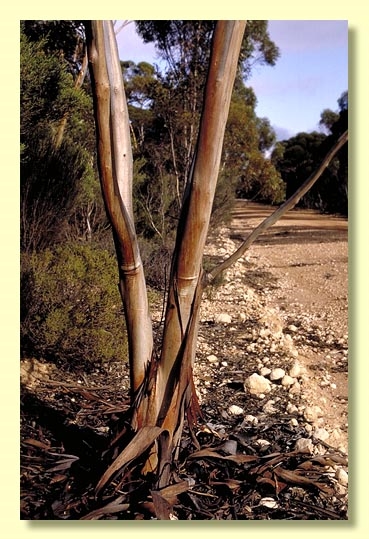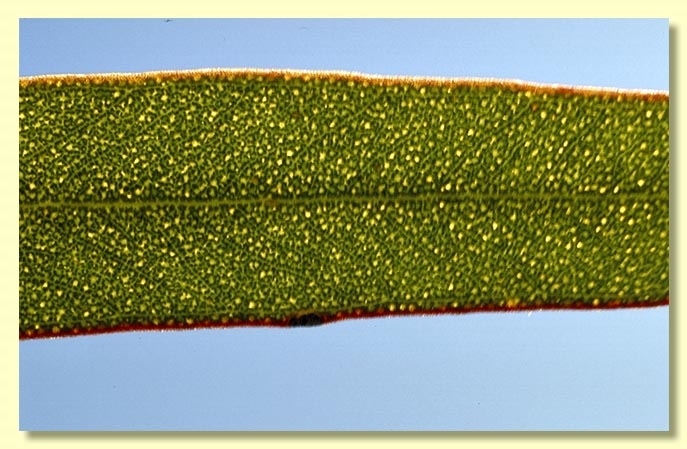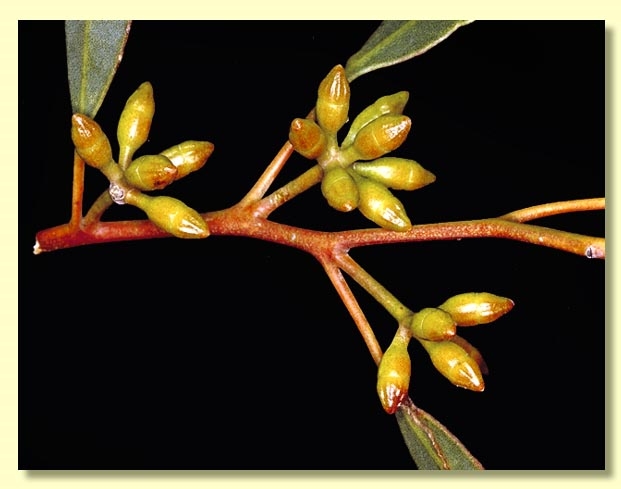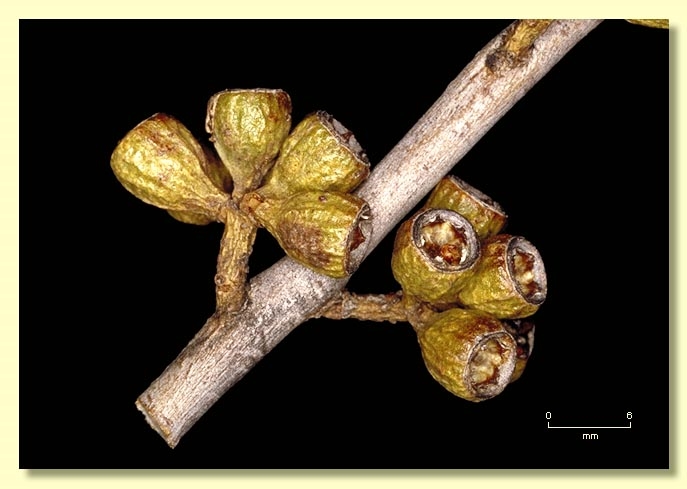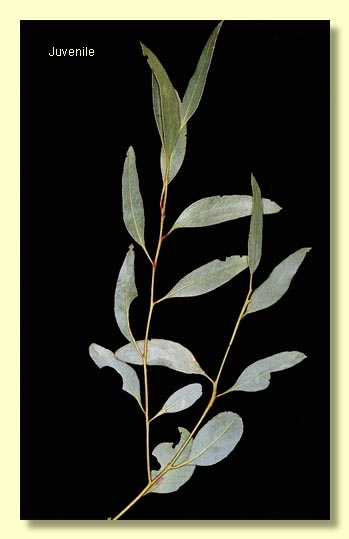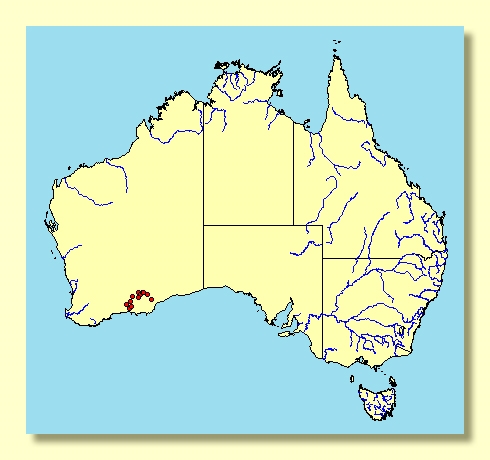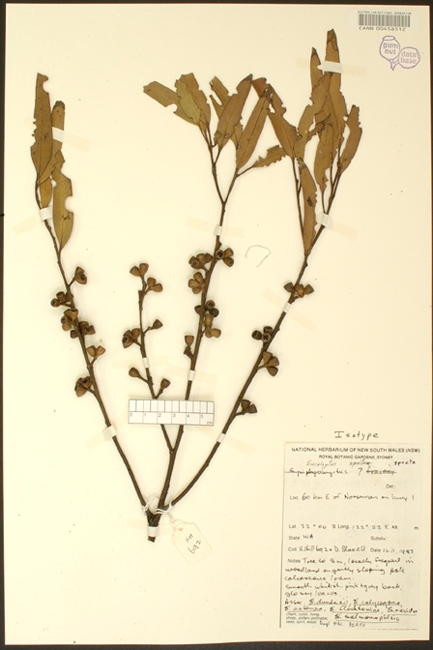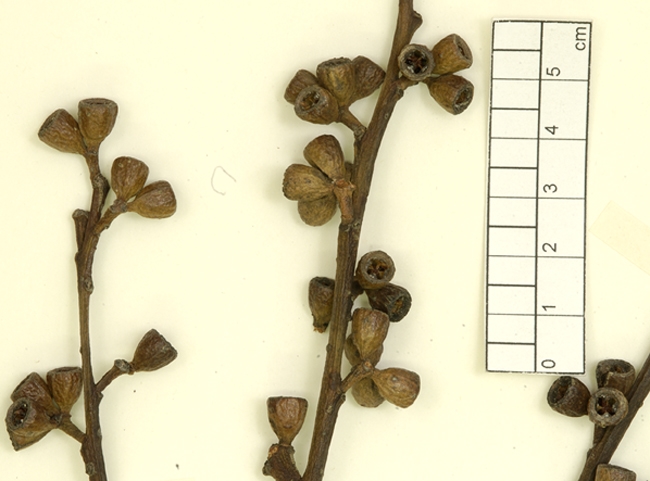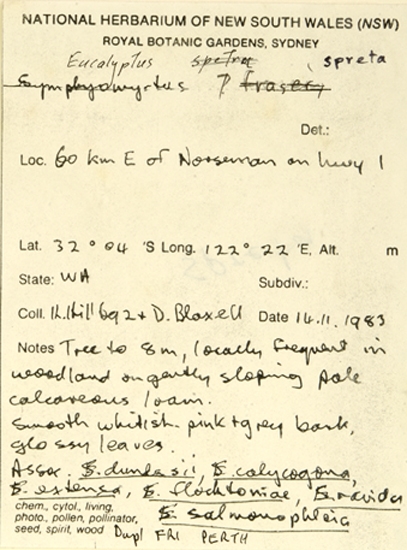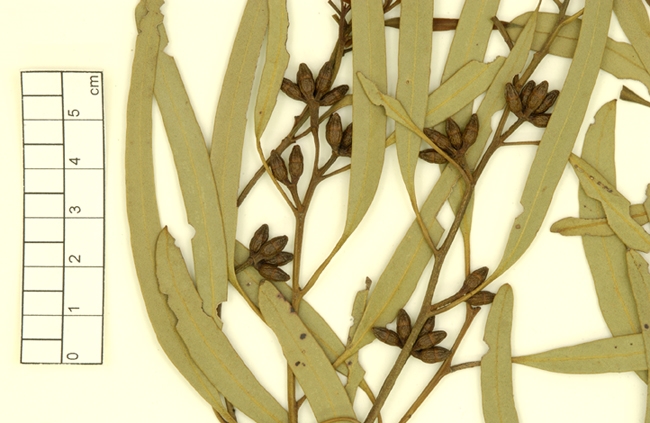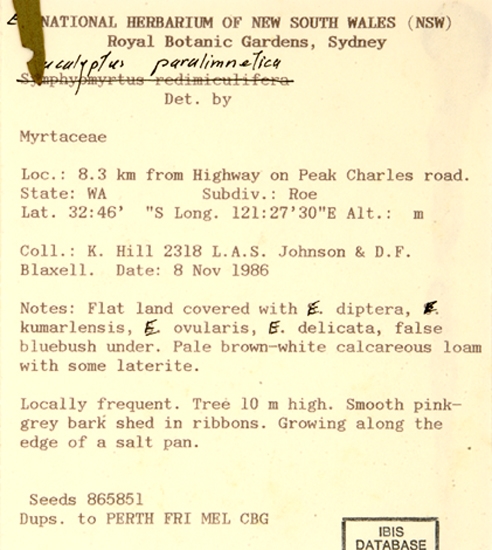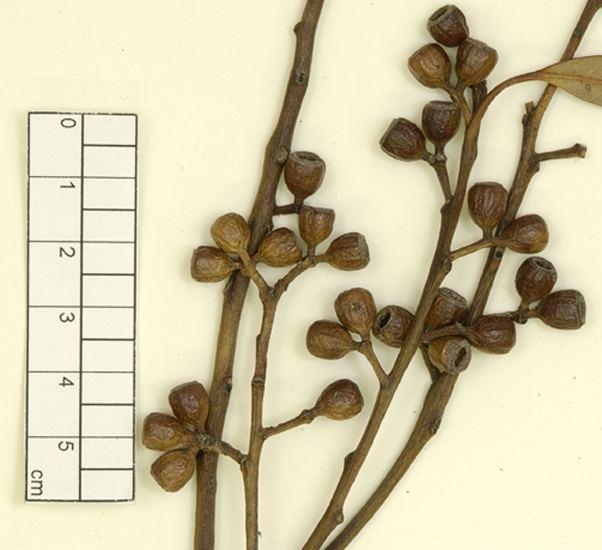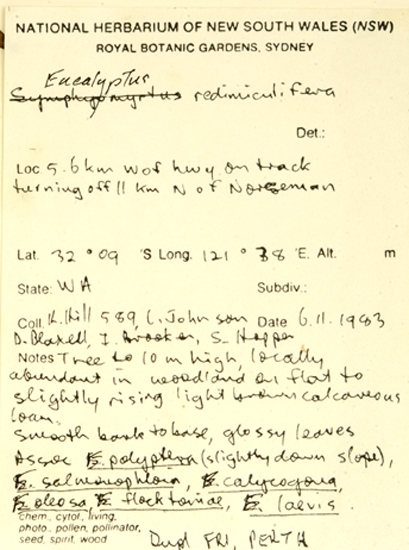Eucalyptus | Symphyomyrtus | Dumaria | Rufispermae
Euclid - Online edition
Eucalyptus spreta
Bark smooth throughout, grey, orange-grey and whitish, shedding in long ribbons.
Branchlets have oil glands in the pith.
Juvenile growth (coppice or field seedlings to 50 cm): stems rounded to square in cross-section; juvenile leaves always petiolate, alternate, ovate to lanceolate, 6–9 cm long, 1.3–2 cm wide, grey-green, dull.
Adult leaves alternate, petioles 1.2–2 cm long; blade narrowly lanceolate to falcate, 7–13 cm long, 0.7–2 cm wide, base tapering to petiole, margin entire, apex pointed, concolorous, glossy, bluish green maturing dark green, side-veins usually acute, rarely wider, reticulation dense to very dense, intramarginal vein present, oil glands intersectional, numerous, slightly irregular in outline.
Inflorescence axillary unbranched, peduncles rounded or slightly flattened, 0.5–1.3 cm long, buds 7, pedicellate, pedicels 0.1–0.5 cm long. Mature buds ovoid to cylindrical (0.7–1.1 cm long, 0.4–0.5 cm wide), longitudinally striate, scar present (outer operculum shed early), inner operculum prominently beaked to conical (0.3–0.6 cm long), stamens inflexed, cuboid to wedge shaped versatile anthers, dorsifixed, dehiscing by longitudinal slits, style long and straight, stigma more or less rounded, locules (3)4 or 5, the placentae each with 4 vertical rows of ovules. Flowers white.
Fruit pedicellate or sometimes almost sessile, pedicels 0.1–0.3 cm long, usually cupular, rarely tending to obconical, 0.4–0.7 cm long, 0.4–0.7 cm wide, unribbed, disc descending, valves (3)4 or 5, enclosed.
Seeds reddish brown and glossy, 1.0–2.5 mm long, flattened-ovoid, sometimes pointed at one end, dorsal face lacunose but surface usually smooth or scarcely reticulate, hilum ventral.
Cultivated seedlings (measured at node 10): cotyledons reniform; stems usually square in cross-section; leaves always petiolate, opposite for 3 to 5 nodes then alternate, ovate, 5–8 cm long, 1.5–3.5 cm wide, dull, green.
Flowering has been recorded in March.
A slender smooth-barked mallet with a short stem and conspicuous steeply branching habit and a glossy green crown, endemic to Western Australia. Its distribution is poorly known but it has been collected on the lower slopes of the Fraser Range between Norseman and Balladonia, also in the area between Kumarl and Peak Charles and to the south of there on flattish sites. It is found in small pure stands on pale grey to grey-red loam with limestone.
In the classification of Brooker (2000) Eucalyptus spreta belongs in Eucalyptus subgenus Symphyomyrtus section Dumaria having these features: buds initially with two opercula the outer shed early, stamens strongly inflexed, ovules in 4 rows on the placentae and cotyledons reniform. Within section Dumaria the species belongs to a large sub-group of closely related species (series Rufispermae, 37 described species and subspecies) diagnosed by glandular pith in the branchlets, cuboid to wedge shaped versatile anthers, and by the reddish brown and glossy, flattish seeds which are unique to the series.
Eucalyptus spreta is one of the small-budded and small-fruited species of series Rufispermae and is closely related to two mallee species E. phenax subsp. phenax and E. pileata from which it is distinguished by the often beaked operculum and mallet habit.
The recently described species E. paralimnetica (see K.D. Hill et al., 2001) is considered here to be synonymous with E. spreta. Both have a sporadic distribution from the Fraser Range to north-west of Salmon Gums and differ only slightly in size of buds and fruit. Both are glossy-leaved trees (mallets) to 10 m tall with E. spreta branching low on a short bole.
Another tree species recently described by K.D. Hill et al. (ibid.), E. redimiculifera, from one small area north-west of Norseman, differs in having dull to slightly glossy leaves compared with the glossy leaves in E. spreta. One specimen from this area, and cited in the above publication as E. redimiculifera, has glaucous branchlets, buds and fruit, a characteristic absent from the type specimen and all other specimens cited under that name. Further field research is needed in this area extending north-west through the Goldfields woodlands to Koolyanobbing where a tree form of the glaucous E. sheathiana, with delicate leaves, buds and fruit, is known to occur. The type specimen of E. redimiculifera looks remarkably like the type specimen of E. spreta and it is here included in the latter species.


